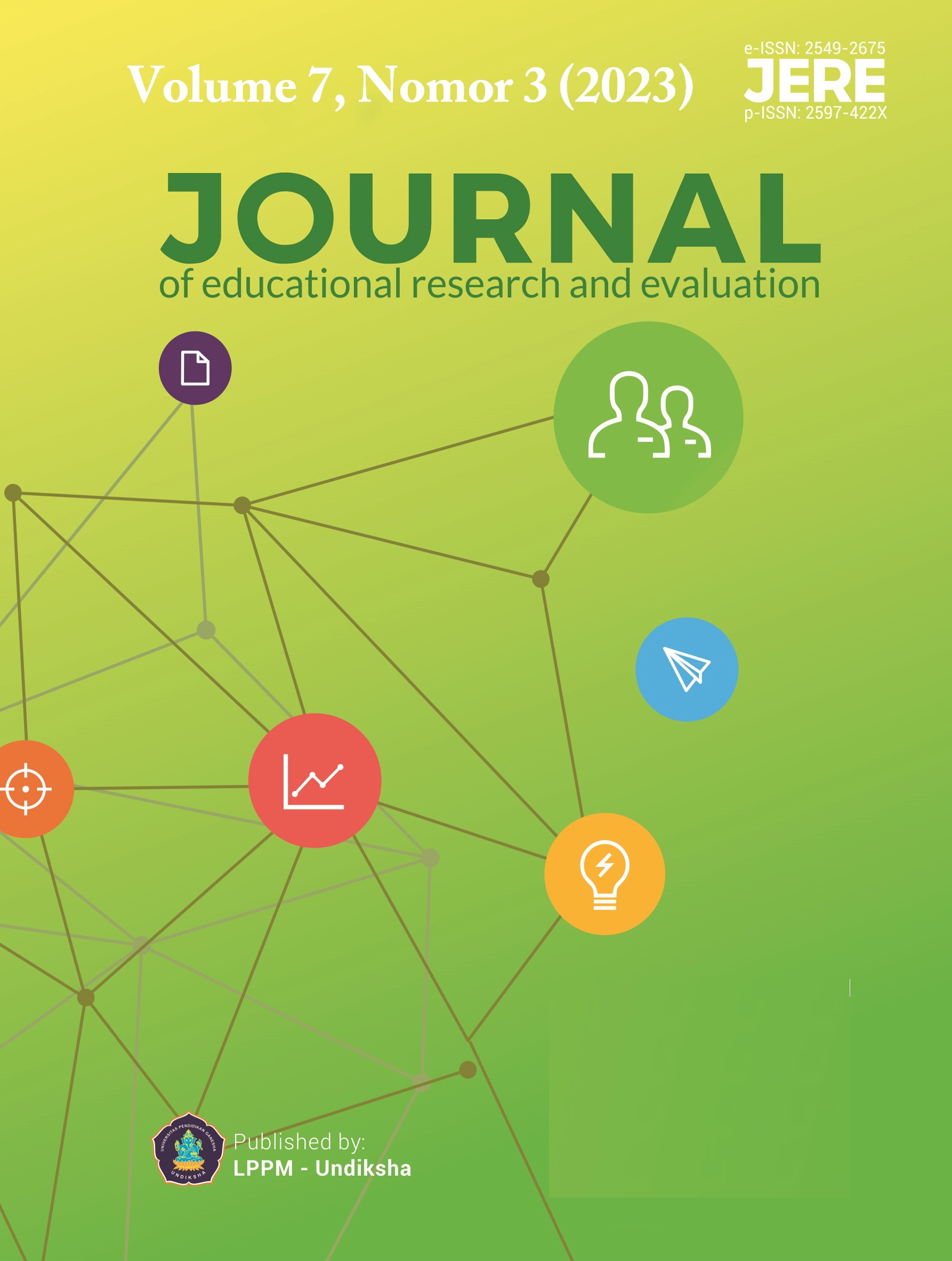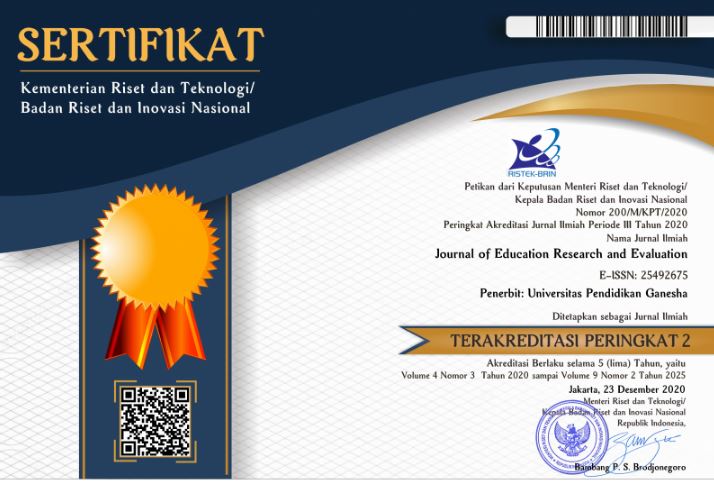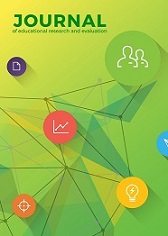Exploring Ethnomathematics in Batak Toba Carvings for Locally-based Mathematics Teaching Material
DOI:
https://doi.org/10.23887/jere.v7i3.66787Keywords:
Symmetry, ethnomathematics, traditional carvings, gorga, Batak TobaAbstract
As one of the traditional ornaments of the Batak Toba tribe, "gorga" carries philosophical meaning and serves to embellish the decoration of traditional houses. The gorga motif has its own distinctive characteristics, with closely arranged patterns and symmetrical designs. This indicates the presence of mathematical aspects within these carved gorga patterns. This research aims to analyze the symmetries embedded in the gorga motifs that can be utilized as locally-based mathematics teaching material. The study is conducted by exploring various gorga motifs and analyzing their types of symmetry. The research is employing an ethnographic research approach. Data is collected through observing buildings adorned with gorga motifs, studying literature, and conducting interviews with gorga carvers. Qualitative data analysis can be started with data reduction, data presentation, drawing conclusions and verification. The research findings reveal the existence of seven types of symmetry obtained from all gorga motifs. These symmetry types include translation symmetry, glide reflect symmetry, vertical symmetry, rotation 180° symmetry, vertical and rotation 180° symmetry, horizontal symmetry, and vertical and horizontal symmetry.
References
Abdullah, A. S. (2017). Ethnomathematics in perspective of sundanese culture. Journal on Mathematics Education, 8(1), 1–16. https://doi.org/10.22342/jme.8.1.3877.1-15.
Abroriy, D. (2020). Etnomatematika dalam Perspektif Budaya Madura. Indonesian Journal of Mathematics and Natural Science Education, 1(3), 182–192. https://doi.org/10.35719/mass.v1i3.44.
Bogdan, R., & Biklen, S. (2007). Qualitative research for education: An introduction to theory and methods (5th ed.). Allyn & Bacon.
Booth, J. L., McGinn, K. M., Barbieri, C., Begolli, K. N., Chang, B., Miller-Cotto, D., Young, L. K., & Davenport, J. L. (2017). Evidence for Cognitive Science Principles that Impact Learning in Mathematics. In Acquisition of Complex Arithmetic Skills and Higher-Order Mathematics Concepts. Elsevier Inc. https://doi.org/10.1016/b978-0-12-805086-6.00013-8.
Colliver, Y. (2018). Fostering young children’s interest in numeracy through demonstration of its value: the Footsteps Study. Mathematics Education Research Journal, 30(4), 407–428. https://doi.org/10.1007/s13394-017-0216-4.
Ditasona, C. (2018). Ethnomathematics Exploration of the Toba Community: Elements of Geometry Transformation Contained in Gorga (Ornament on Bataks House). IOP Conference Series: Materials Science and Engineering, 335(1). https://doi.org/10.1088/1757-899X/335/1/012042.
Ditasona, Candra, Rosjanuardi, R., & Turmudi, T. (2021). Arithmetic Sequence on the Pattern of Gorga. Solid State Technology, 64(2), 3002–3008. http://www.solidstatetechnology.us/index.php/JSST/article/view/9877.
Dudu, W. T., & Vhurumuku, E. (2012). Teacher practices of inquiry when teaching investigations: A case study. Journal of Science Teacher Education, 23(6), 579–600. https://doi.org/10.1007/s10972-012-9287-y.
Fauzi, L. M., Hayati, N., Satriawan, R., & Fahrurrozi, F. (2023). Perceptions of geometry and cultural values on traditional woven fabric motifs of the Sasak people. Jurnal Elemen, 9(1), 153–167. https://doi.org/10.29408/jel.v9i1.6873.
Febriyanti, C., Kencanawaty, G., & Irawan, A. (2019). Etnomatematika Permainan Kelereng. MaPan, 7(1), 32–40. https://doi.org/10.24252/mapan.2019v7n1a3.
Fouze, A. Q., & Amit, M. (2018). Development of mathematical thinking through integration of ethnomathematic folklore game in math instruction. Eurasia Journal of Mathematics, Science and Technology Education, 14(2), 617–630. https://doi.org/10.12973/ejmste/80626.
Gilsdorf, T. E. (2016). Ethnomathematics of the Inkas. Encyclopaedia of the History of Science, Technology, and Medicine in Non-Western Cultures, 1560, 1834–1848. https://doi.org/10.1007/978-94-007-7747-7_8647.
Gupta, T., Burke, K. A., & Greenbowe, T. J. (2022). Shifting the ownership of learning from instructor to students through student-led instructor-facilitated guided-inquiry learning. In Teaching Innovation in University Education: Case Studies and Main Practices, 69–98. https://doi.org/10.4018/978-1-6684-4441-2.ch005.
Hasudungan, R., Sitindjak, I., Wardani, L. K., & Thamrin, D. (2016). J ournal of A rts & H umanities Study of Ornaments in the Inkulturatif Pangururan Catholic Church in Samosir , North Sumatera. 05(07), 49–60. https://repository.petra.ac.id/17434.
Hidayat, E., Ratnaningsih, N., Sunendar, A., & Siregar, J. S. (2020). Ethnomathematics: Disclosing mathematical concept in batak toba traditional house. Journal of Physics: Conference Series, 1657(1). https://doi.org/10.1088/1742-6596/1657/1/012053.
Lahdenperä, J., Rämö, J., & Postareff, L. (2022). Student-centred learning environments supporting undergraduate mathematics students to apply regulated learning: A mixed-methods approach. Journal of Mathematical Behavior, 66(February), 1-15. https://doi.org/10.1016/j.jmathb.2022.100949.
Marchis, I. (2009). Symmetry and Interculturality. Acta Didactica Napocensia, 2, 57–62. https://eric.ed.gov/?id=EJ1052280.
Marta, F., & Simorangkir, A. (2023). Ethnomatematics Exploration on Gondang Batak Musical Instruments Assisted by Geogebra. Indonesian Journal of Education and Mathematical Science, 4(1), 7–13. https://doi.org/10.30596/ijems.v4i1.13113.
Maryati, M., & Prahmana, R. C. I. (2018). Ethnomathematics: Exploring The Activities of Designing Kebaya Kartini. Jurnal Matematika Dan Pembelajaran, 6(1), 11–19. https://doi.org/10.24252/mapan.2018v6n1a2.
Miles, M. B., & Huberman, A. M. (2014). Qualitative Data Analysis: An Expanded Sourcebook (3rd ed.). SAGE Publications.
Morrar, R., Arman, H., & Mousa, S. (2017). The fourth industrial revolution (Industry 4.0): A social innovation perspective. Technology Innovation Management Review, 7(11), 12–20. https://timreview.ca/sites/default/files/Issue_PDF/TIMReview_November2017.pdf#page=12.
Prahmana, R. C. I., & D’Ambrosio, U. (2020). Learning geometry and values from patterns: Ethnomathematics on the batik patterns of yogyakarta, indonesia. Journal on Mathematics Education, 11(3), 439–456. https://doi.org/10.22342/jme.11.3.12949.439-456.
Rahmadani, T., & Reflina, R. (2023). Ethnomathematics Exploration of the Taganing Musical Instrumen. Mathline : Jurnal Matematika Dan Pendidikan Matematika, 8(2), 589–602. https://doi.org/http://doi.org/10.31943/mathline.v8i2.425.
Rosa, M., D’Ambrosio, U., Orey, D., Shirley, L., Alangui, W., Palhares, P., & Gavarrete, M. E. (2016). Current and Future Perspectives of Ethnomathematics as a Program. https://doi.org/10.1007/978-3-319-30120-4.
Rosa, M., & Orey, D. (2011a). Ethnomathematics: the cultural aspects of mathematics. Revista Latinoamericana de Etnomatemática, 4(2), 32–54. http://funes.uniandes.edu.co/3079.
Rosa, M., & Orey, D. C. (2011b). Ethnomodeling : The Pedagogical Action of Ethnomathematics as a Program 1. Conferencia Interamericana de Educao Matematica, 205–218. http://www.repositorio.ufop.br/handle/123456789/3845.
Rosa, M., Shirley, L., Gavarrete, M. E., & Alangui, W. V. (2017). Ethnomathematics and its diverse approaches for mathematics education (1st ed.). Springer. https://doi.org/10.1007/978-3-319-59220-6.
Silverman, D. (2014). Interpreting Qualitative Data (K. Metzler (ed.); 5th ed.). Sage. https://doi.org/10.1353/sew.2019.0012.
Simanjunntak, sinta D., & Imelda. (2018). Respon Siswa Terhadap Pembelajaran Matematika Realistik Dengan Konteks Budaya Batak Toba. MES (Jurnal of Mathematic Education and Science), 4(1), 81–88. https://doi.org/10.30743/mes.v4i1.874.
Simanjuntak, H., Nawawiy Loebis, M., & Lindarto, D. (2020). Meaning of ornament in architecture (Case study: Contemporary Architecture Batak Toba). IOP Conference Series: Earth and Environmental Science, 452(1). https://doi.org/10.1088/1755-1315/452/1/012010.
Sirate, S. F. S. (2011). Studi Kualitatif Tentang Aktivitas Etnomatematika Dalam Kehidupan Masyarakat Tolaki. Lentera Pendidikan : Jurnal Ilmu Tarbiyah Dan Keguruan, 14(2), 123–136. https://doi.org/10.24252/lp.2011v14n2a1.
Situngkir, H. (2012). Deconstructing Bataknese Gorga. SSRN Electronic Journal, 1–10. https://doi.org/10.2139/ssrn.2159015.
Sulaiman, R., Husain, A. H., & Sulaiman, R. (2019). Appreciation of Siri Dungun Paintings in Ethnomathematics Context. International Journal of Academic Research in Business and Social Sciences, 9(9), 1116–1126. https://doi.org/10.6007/ijarbss/v9-i9/6406.
Tholani, M. I. (2013). Problematika Pendidikan di Indonesia ( Telaah Aspek Budaya ). Jurnal Pendidikan, 1(2), 64–74. https://unimuda.e-journal.id/jurnalpendidikan/article/view/148.
W.Creswell, J., & N.Poth, C. (2018). Qualitative Inguiry Research Design:Choosing Among Five Approaches (4th ed.). Sage.
Wahyuni, Panjaitan, C. J., Nuraida, & Husna, N. (2021). Etnomatematika Pada Permainan Kelereng Di Pesisir Aceh Dan Hubungannya Dengan Matematika Sekolah. Jurnal Mathematic Paedagogic, V(2). https://doi.org/10.36294/jmp.v5i2.1743.
Winiarsih, I., Hakim, A. R., & Sari, N. I. (2021). Analisis Kemampuan Berpikir Kreatif Matematis dalam Menyelesaikan Soal Matriks Ditinjau dari Gaya Belajar. Jurnal Pendidikan Teknik, 2(1), 139–146. https://www.siducat.org/index.php/jpt/article/view/254.
Downloads
Published
How to Cite
Issue
Section
License
Copyright (c) 2023 Candra Ditasona

This work is licensed under a Creative Commons Attribution-ShareAlike 4.0 International License.
Authors who publish with the Journal of Evaluation and Research in Education (JERE) agree to the following terms:
- Authors retain copyright and grant the journal the right of first publication with the work simultaneously licensed under a Creative Commons Attribution License (CC BY-SA 4.0) that allows others to share the work with an acknowledgment of the work's authorship and initial publication in this journal.
- Authors are able to enter into separate, additional contractual arrangements for the non-exclusive distribution of the journal's published version of the work (e.g., post it to an institutional repository or publish it in a book), with an acknowledgment of its initial publication in this journal.
- Authors are permitted and encouraged to post their work online (e.g., in institutional repositories or on their website) prior to and during the submission process, as it can lead to productive exchanges, as well as earlier and greater citation of published work. (See The Effect of Open Access)











